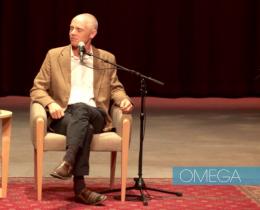Not everyone knows what they want to be when they grow up, but at 8, Kasha Dziewisz knew. She wanted to be a fashion designer and artist. Color, form, and art captured her attention and youthful imagination.
“Color has been the backbone of all I do. It’s a motivator for me and makes me feel happy. Even around the house, I always like to have fresh flowers. Sometimes I’ll arrange a bowl of fruit next to it and then end up drawing or painting it,” says Kasha.
Unfortunately, her enthusiasm for art as a profession was not encouraged in her childhood. Despite taking a handful of art classes while studying communications and design at Simmons College, she followed a more socially accepted path to a corporate job in communications. She became a writer, creating content for some of the earliest versions of websites in the late 1980s while occasionally dabbling in artistic pursuits like silversmithing and paper making.
Check One Off the Bucket List
But in 1990 her life and her art got put on hold when she became sick. She was eventually diagnosed with Myalgic Encephalomyelitis/Chronic Fatigue Syndrome (ME/CFS), but the debilitating disease left her worn out and unable to make any art besides the occasional piece of jewelry. "The first 5 years I was pretty much not able to do anything. The only thing I could do to keep art in my life in some way was to choose clothes that were colorful,” she says.
As she tried a variety of holistic practices to help navigate her illness, she heard about the Omega Institute. She added “a workshop at Omega” to her bucket list and hoped someday to be well enough to attend.
Fast forward more than two decades, and Kasha’s illness began to subside. She realized she’d become what Julia Cameron, author of The Artist’s Way, calls a “shadow artist.” She was drawn to artists, architects, and designers; she visited museums; and she thought about color all the time. But she wasn’t making any art herself. So she signed up for some classes at the Worcester Art Museum and received a scholarship to attend. Finally, she felt well enough to come to Omega. In spring of 2017, she applied for and received a scholarship to attend Dan Welden’s 5-day workshop The Art of Monoprinting.
Discovering a Talent
“I had never worked in this medium before. It was totally new. I did some research and reading, but that didn't prepare me for how much fun it was going to be!” Kasha says. “We had someone come into the class and do qigong as a movement life model. They practiced qigong for 15 minutes and we all drew him. That’s when I had my breakthrough. I did a gesture drawing of him, and I didn't think anything of it. But everybody else in the class was over the moon about it. ”
“Dan and the assistants said, ‘Keep doing this.’ I asked Dan if theses types of prints (trace monotypes) would be good for a portfolio. He said, ‘Do 55 and pick the best 30 and take them to a gallery.’ I had wanted to know if they'd be good for a portfolio for applying for art school, but I took his advice. I showed them to some people and I now have a show coming up in March at my public library in Littleton, Massachusetts. For the show I’ll be creating more prints using movement life models doing fencing, ballet, soccer, volleyball, and more.”
New Inspiration & Connections
Coming to Omega to study with 14 other artists has done more for Kasha than shape the direction of her artistic endeavors. “I built some really solid friendships and professional relationships at Omega. I loved eating with other people in the dining hall. As a class we started eating together, and it turned into a regular family situation. I am also more relaxed since returning home after a week off from TV, phone calls, and technology. The Omega environment calmed me and the connection with other artists, both in the studio and at meals, gave me a sense of well-being. I enjoyed that part of the experience very much. I’m sure some of those relationships will endure and I look forward to making art with this group of people again.”



